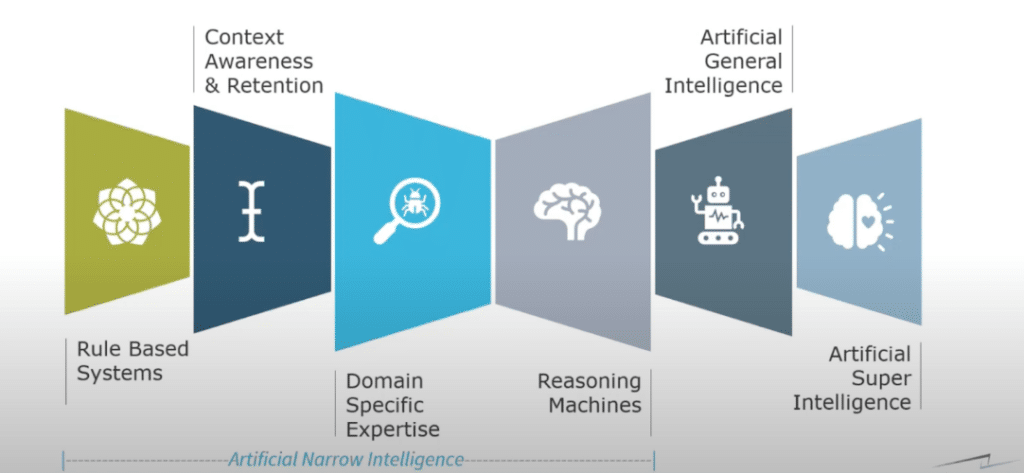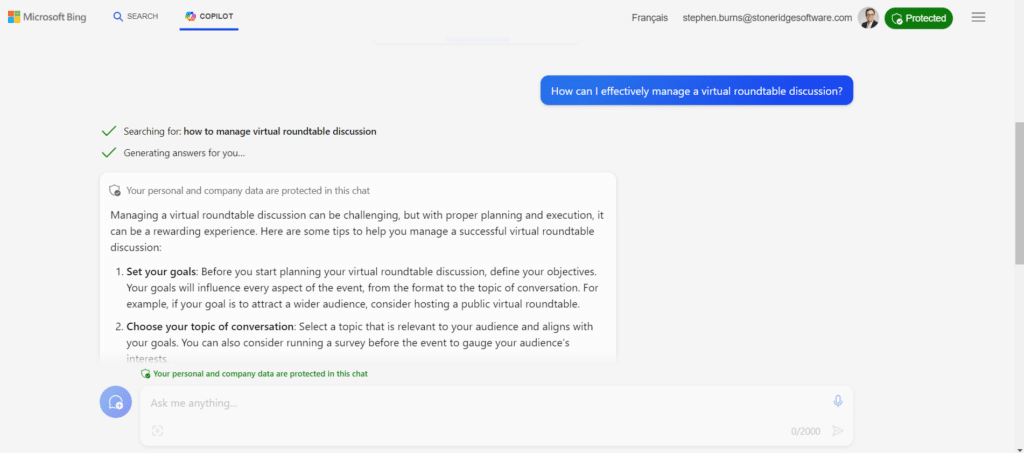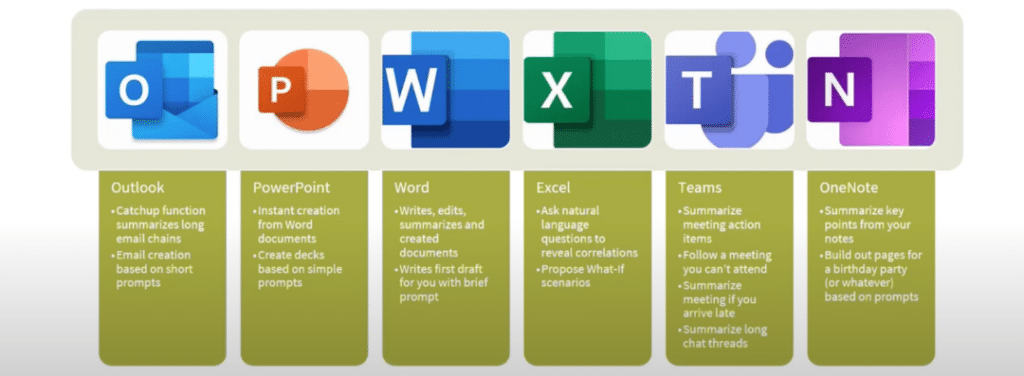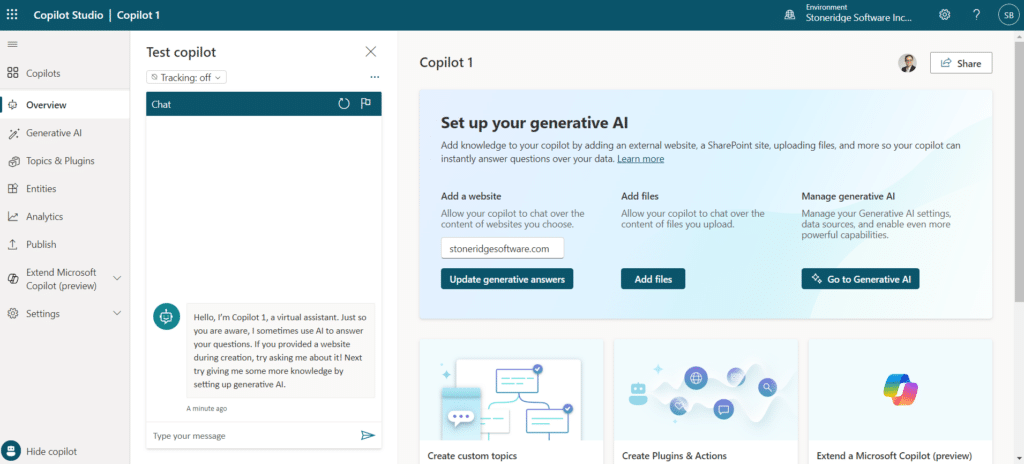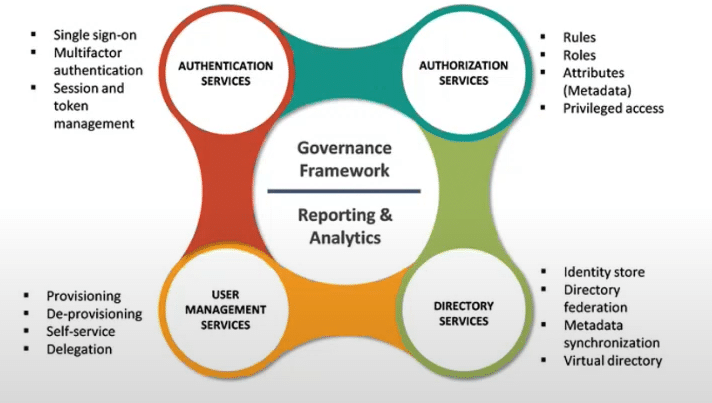What You Need to Know Before Talking to Leaders About AI at Your Business
Learning how AI can propel your business forward and how to pitch its use to your company's leaders can help you harness its full abilities.
If you pay attention to technology news, AI - or artificial intelligence - is everywhere. It spans a broad field of technologies including machine learning, computer vision, natural language processing, and robotics. While these might seem like extremely complex concepts, AI is rapidly evolving and integrates with the everyday solutions you use. Because of this, business leaders must understand AI can help them create new opportunities and tackle existing challenges more effectively.
Staying Informed About AI Can Help You Present to Leaders In Your Business
In this blog, we will discuss some of the basics of AI, including what it is/is not, where it is today, where it is heading, and how to ensure data protection. Our goal is to provide you with key insights to help you have informed and intelligent discussions with your leadership about the positive impacts of AI on your business.
The Evolution of Artificial Intelligence
The concept of AI has been around since the 1950s but has grown tremendously in recent years. From the simplest rule-based systems to the future of superintelligence, here is an outline of the AI journey and how it has evolved.
- Rule-Based Systems: Initially, AI systems operated on predefined rules or instructions to execute specific tasks, often involving repetitive training methods.
- Context Awareness and Retention: Over time, these systems evolved to comprehend and remember the context of their interactions with users or environments. They leverage this understanding to offer personalized and relevant responses or services. For instance, an AI system inquiring about the weather can utilize your location to provide accurate information.
- Domain-Specific Expertise: The next advancement led to systems achieving or even surpassing human-level performance in specific domains or tasks.
- Reasoning Machines: Many contemporary AI systems today possess the ability to mimic human thinking processes, encompassing logic, inference, planning, creativity, and problem-solving. This allows them to generate complex concepts or ideas based on a specific prompt or theme.
- Artificial General Intelligence: Presently, AI systems are rapidly progressing towards achieving Artificial General Intelligence (AGI). AGI involves attaining human-level intelligence in any domain or task. Such systems can understand, learn, and adapt to various situations or environments, showcasing general cognitive abilities. For example, they can engage in conversations on diverse topics and perform a wide array of tasks.
- Artificial Super Intelligence: Looking ahead, there's the prospect of Artificial Super Intelligence (ASI), where AI systems could surpass human intelligence in every aspect. ASI would transcend the limits of human cognition, perception, and action, possessing superior capabilities. The discussion around AI ethics becomes crucial as we explore the possibilities and implications of achieving Artificial superintelligence.
Artificial Intelligence Today
Let’s take a look at the current state of AI and how it is transforming various aspects of our lives and businesses. AI functions can be classified into three primary groups—pattern matching, physical control, and communications. We will now delve into their current significance and discuss some of the future trends and opportunities that these AI functions will bring in the next five to 10 years.
- Pattern matching: This group includes the model training and generative AI components. These functions enable AI to learn from data and create new content, such as text, images, audio, and video (ie: Chat GPT and Bing). We will soon see how these functions create a content generation explosion and how you can leverage them for your purposes.
- Physical controls: Includes the AI functions that enable physical manipulation and movement (ie: robots and self-driving vehicles). This has the potential to revolutionize the manufacturing and transportation sectors, and domains requiring physical work.
- Communications: These are AI functions that enable human-like interactions and experiences (ie: voice, video, and mixed reality). These functions enhance the way we communicate, collaborate, and connect with others on both personal and professional levels.
What is Generative Artificial Intelligence?
Generative AI, or large language models (LLMs), are powerful AI systems (ie: ChatGPT and Bing). These systems read and understand huge amounts of data from the internet and other sources and can produce answers in various languages. Trained by OpenAI, it can provide natural language responses and engage in conversational interactions. Most importantly, they can keep learning and improving over time, as they encounter new data and feedback.
Current AI Engines Available: Bing is the Winner!
When it comes to choosing an AI engine for your tasks and projects, you have several options to consider, such as Chat GPT, Bing, and Bard.
While Chat GPT initially drew attention, we recommend Bing for various reasons:
- Bing utilizes the gp4 model, the most advanced LLM, and it's free, unlike Chat GPT and Bard which use older LLM versions unless a monthly fee is paid for gp4 access.
- Bing is constantly improving; Microsoft consistently enhances it, ensuring it stays current and intelligent.
- Bing’s output is versatile, offering three different writing styles to meet different purposes and preferences: creative, balanced, and mixed.
The creative style can be used to generate content, such as speeches or stories. It also gives you a balanced style in answering questions and gives you facts and summaries you can use. The quality of what it churns out depends on your prompt.
The Value of “The Prompt”
“The prompt” is the most common way of asking a question or giving a command to an artificial intelligence model. (ie: Chat GPT and Bing) From there it can generate various types of content, such as paragraphs, code, summaries, speeches, and more.
To write a good prompt, you need to consider the following aspects:
- The output that you want: Clearly outline the format, length, and purpose of the content you want the model to generate.
- The context that you provide: Provide relevant background details to help the model grasp the topic and understand the target audience.
- The constraints that you impose: Direct the model on what to include or ignore, such as specific keywords, examples, or sources.
- The challenges that you pose: Engage the model by requesting evaluations of your content for potential improvements or generating questions to test your knowledge and skills.
By using these techniques, you can leverage the power of the model to create engaging and informative content for your specific purpose. Here are some tips on how to write a great prompt:
- Provide context: Your prompt should be clear and concise. It should provide enough information for the AI to understand what you’re asking for.
- Be specific: The more specific your prompt is, the better the AI’s response will be. Avoid vague or ambiguous language.
- Use natural language: AI is designed to understand natural language, so try to phrase your prompt in a conversational way.
- Avoid jargon: Unless you’re working with a specialized AI system, avoid using technical jargon or industry-specific terms.
- Use complete sentences: AI systems work best when they receive complete sentences as input.
- Be patient: AI systems can take some time to generate a response, so be patient and give it time to process your prompt.
- Use examples: Providing examples of what you’re looking for can help the AI understand your prompt better.
- Avoid bias: Be mindful of any biases you may have when crafting your prompt. Avoid using language that could be interpreted as discriminatory or offensive.
- Test your prompts: Try out different prompts to see which ones generate the best responses.
- Keep it simple: Avoid overly complex prompts. Simple, straightforward prompts are often the most effective.
Practical Applications of Artificial Intelligence
AI is transforming the way we work, communicate, and interact with various applications and services. Microsoft is investing heavily in AI across its products with Microsoft Copilot for Dynamics 365, Microsoft 365, Outlook, PowerPoint, Word, Teams, and OneNote.
Some of the practical uses of AI that are already available or coming soon are:
- Capturing functional summaries of meetings in Outlook can help you keep track of the main points, decisions, and action items.
- Creating emails, presentations, documents, and papers with the help of Bing, which can generate content based on your input, context, and preferences.
- Converting a Word document to a PowerPoint presentation can save you time and effort by adding images and colors that match the sentiment of your content.
- Summarizing long text into digestible bullets that you can share with others, can help you concisely convey the key information.
- Using Microsoft 365 Co-pilot to summarize your notes from meetings with clients, can help you organize your thoughts and follow up on important tasks.
In 2024, Microsoft is set to release a full slate of new AI features in various business applications such as:
Artificial Intelligence and Customer Service
AI has a lot of potential, specifically, to improve customer service. One of the fastest applications we will see will be through using virtual agents or bots that can provide faster and better answers to customer queries. Instead of making customers wait on hold or rely on limited databases, AI can leverage generative models that can search the entire internet for relevant information and solutions. AI can also analyze the sentiment of customers and tailor the responses accordingly. This way, AI can enhance the customer experience and save costs for your organization.
Ensuring Your Information is Secure in AI Engines
As AI becomes more prevalent, it is crucial to ensure that your information is secure and protected from unauthorized access. There are three main aspects of security to consider when using AI engines:
- On-premise security refers to the physical and network security of your devices and servers that host or connect to the AI engine. You need to make sure that your firewalls, antivirus software, and encryption protocols are up-to-date and can prevent system breaches.
- Cloud security refers to the identity and access management of your users and data in the cloud-based AI engine. You need to make sure that only authorized users can access the AI engine and have the appropriate permissions to view, edit, or delete the data. You also need to make sure that your data is encrypted and backed up in the cloud, and that you have a disaster recovery plan.
- Compliance refers to the legal and ethical standards that govern the use of AI engines and the data they process. You need to make sure that your AI engine complies with the relevant laws and regulations of your industry and region. You also need to make sure that your AI engine respects the privacy and rights of your customers, employees, and partners. Transparency about any issues that come up is also key.
Take Caution When Using Public AI
One of the challenges of using AI engines is that they are constantly learning and improving from the data they process. This means that you need to be careful about what kind of data you feed into the AI engine, especially if it is a public or shared engine. You do not want to expose any confidential or sensitive information that could be used to train the AI engine.
One of the solutions to this problem is to use a private or enterprise AI engine, such as Bing Chat Enterprise. This is a service that we provide at Stoneridge Software, where we can help you set up and customize your own AI engine that is powered by Bing but hosted within your domain. This way, you can use the full potential of AI without worrying about your information being available to everyone. You can also control the access and permissions of your users and data, and monitor the performance and quality of your AI engine.
Takeaways
Here are four immediate takeaways that you should consider when looking at ways to incorporate AI into your manufacturing process and systems.
- Teach your people how to use the new search practice and the prompts to get the most out of the AI engine.
- Look for opportunities to use the large language model to increase customer efficiency or customer service efficiency. You can use AI for case management, virtual agents, or bots to answer common questions.
- Look at your security and make sure you are ready for AI. You need to have a security assessment and make sure your information is not getting exposed.
- Keep your eye out for future enhancements and learn from the experts. You can find many classes, videos, podcasts, and documents on AI.
Stoneridge Software Is Your AI Partner - Reach Out Today
AI is a powerful and exciting technology that can transform your business processes and systems. However, you need to be aware of the challenges and opportunities that come with using it, as well as having the proper governance and security in place to safeguard your team members and organization. That’s where we at Stoneridge Software can help you. We have comprehensive service offerings to ensure your business is ready for AI.
Contact us today and let us show you how we can help you leverage AI for your business success.
Under the terms of this license, you are authorized to share and redistribute the content across various mediums, subject to adherence to the specified conditions: you must provide proper attribution to Stoneridge as the original creator in a manner that does not imply their endorsement of your use, the material is to be utilized solely for non-commercial purposes, and alterations, modifications, or derivative works based on the original material are strictly prohibited.
Responsibility rests with the licensee to ensure that their use of the material does not violate any other rights.

